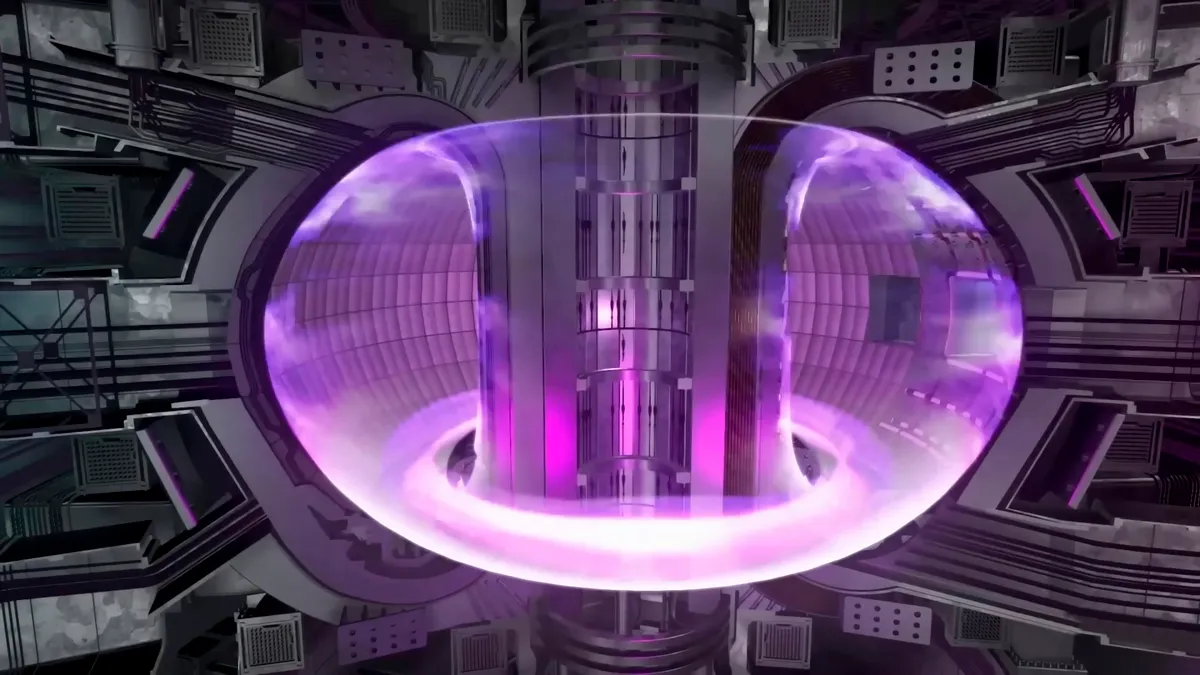Dive Brief:
- The Nuclear Regulatory Commission will establish a framework to oversee fusion energy systems, beginning with a limited revision to materials licensing regulations, and will consider whether to establish a rule category for fusion energy systems, it said Friday.
- The regulations, to be drafted in response to efforts by scientists and business interests to develop and commercialize fusion energy, are consistent with NRC’s mission to license and regulate the use of radioactive byproduct materials, the commission said.
- The effort comes four months after the U.S. Department of Energy announced that researchers achieved net energy gain from nuclear fusion, a key step toward achieving zero-carbon energy.
Dive Insight:
“Dozens of companies are developing pilot-scale commercial fusion designs, and while the technology’s precise future in the United States is uncertain, the agency should provide as much regulatory certainty as possible given what we know today,” NRC Chair Christopher Hanson said in announcing the directive.
Licensing near-term fusion energy systems under a byproduct material framework “will protect public health and safety with a technology-neutral, scalable regulatory approach,” he said.
NRC staff members cited the byproduct framework for regulation because fusion energy systems typically involve the use or production of tritium and other radioactive materials the NRC categorizes as a byproduct material. Because fusion energy systems to date do not involve nuclear materials such as plutonium, uranium-233 or enriched uranium that are used in nuclear fission reactors the NRC regulates, they do not pose a “fission product hazard,” the NRC said.
However, the NRC cited potential radiological hazards related to fusion energy systems, including significant quantities of tritium at sites, in processing and storage and permeating into structural materials.
During operation, fusion devices are a large source of radiation that requires shielding and can cause radiation damage to structures, systems and components, the NRC said. It cited additional potential hazards from neutron bombardment and “energetic plasma-surface interactions” that may generate dust containing tritium.
Under the limited-scope rulemaking, the NRC staff will take into account fusion systems that already have been licensed and are being regulated by states in addition to those that may be licensed before rulemaking is complete.
In its December announcement, DOE reported that scientists at Lawrence Livermore National Laboratory achieved net energy gain in a fusion experiment, a breakthrough that could lead to nuclear fusion technology providing clean and plentiful energy.
Physicists have tried for decades to harness nuclear fusion reactions to generate energy. Until now, researchers have not found a way to produce more energy from the reaction than it consumes, which is known as net energy gain or target gain. Despite this achievement, scientists at Lawrence Livermore say it will be years before fusion ignition will be commercially available.
Fusion works by combining the atomic nuclei of light elements, such as hydrogen, to make heavier elements, such as helium, to release energy. Fusion systems would generate electricity from the energy released when hydrogen atoms are combined to form helium. Current nuclear reactors use the splitting, or fission, of uranium atoms to generate energy.
The NRC said it has long had regulatory jurisdiction over commercial fusion energy devices that are “of significance to the common defense and security or could affect the health and safety of the public.” But the commission directed the NRC staff to wait until commercial deployment of fusion technology “became more predictable” before developing regulations.















